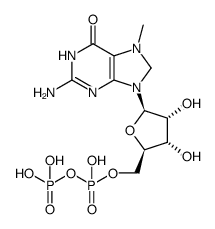DcpS can act in the 5'-3' mRNA decay pathway in addition to the 3'-5' pathway.
Erwin van Dijk, Hervé Le Hir, Bertrand Séraphin
文献索引:Proc. Natl. Acad. Sci. U. S. A. 100 , 12081-12086, (2003)
全文:HTML全文
摘要
Eukaryotic mRNA degradation proceeds through two main pathways, both involving mRNA cap breakdown. In the 3'-5' mRNA decay pathway, mRNA body degradation generates free m7GpppN that is hydrolyzed by DcpS generating m7GMP. In the 5'-3' pathway, the recently identified human Dcp2 decapping enzyme cleaves the cap of deadenylated mRNAs to produce m7GDP and 5'-phosphorylated mRNA. We investigated mRNA decay in human cell extracts by using a new assay for decapping. We observed that 5'-phosphorylated intermediates resulting from decapping appear after incubation of a substrate RNA in human cell extracts, indicating the presence of an active 5'-3' mRNA decay pathway. Surprisingly, however, the cognate m7GDP product was not detected, whereas abundant amounts of m7GMP were generated. Additional experiments revealed that m7GDP is, unexpectedly, efficiently converted to m7GMP in extracts from various organisms. The factor necessary and sufficient for this reaction was identified as DcpS in both yeast and human. m7GMP is thus a general, pathway-independent, by-product of eukaryotic mRNA decay. m7GDP breakdown should prevent misincorporation of methylated nucleotides in nucleic acids and could generate a unique indicator allowing the cell to monitor mRNA decay.
相关化合物
| 结构式 | 名称/CAS号 | 分子式 | 全部文献 |
|---|---|---|---|
 |
7-Methylguanosine 5'-diphosphate sodium
CAS:104809-16-7 |
C11H19N5O11P2 |
|
Elimination of cap structures generated by mRNA decay involv...
2015-01-01 [Nucleic Acids Res. 43(1) , 482-92, (2015)] |
|
Loss of the scavenger mRNA decapping enzyme DCPS causes synd...
2015-06-01 [Hum. Mol. Genet. 24(11) , 3163-71, (2015)] |
|
7-methylguanosine diphosphate (m(7)GDP) is not hydrolyzed bu...
2012-10-09 [Biochemistry 51(40) , 8003-13, (2012)] |
|
Characterization of a second vaccinia virus mRNA-decapping e...
2007-12-01 [J. Virol. 81(23) , 12973-8, (2007)] |
|
Internal and overall motions of the translation factor eIF4E...
1998-07-01 [J. Biomol. NMR 12(1) , 73-88, (1998)] |